- Knee Arthroscopy
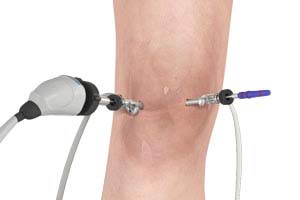
Knee arthroscopy is a common surgical procedure performed using an arthroscope, a viewing instrument, to diagnose or treat a knee problem. It is a relatively safe procedure and you will usually be discharged from the hospital on the same day of surgery.
- ACL Reconstruction
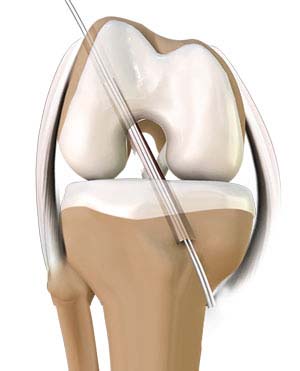
ACL reconstruction is a commonly performed surgical procedure. With recent advances in arthroscopic surgery, it can now be performed with minimal incision and low complication rates.
- Medial Patellofemoral Ligament Reconstruction
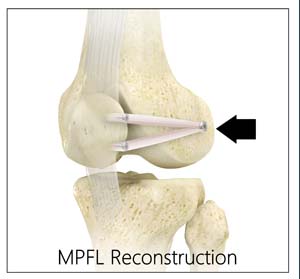
Medial patellofemoral ligament reconstruction is a surgical procedure indicated for severe patellar instability.
- Multiligament Reconstruction of the Knee
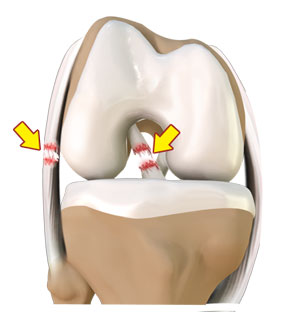
Multiligament knee reconstruction is a surgical procedure to repair or replace two or more damaged ligaments of the knee joint. The surgery can be performed using minimally invasive techniques.
- Meniscal Surgery
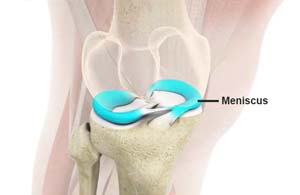
Meniscal surgery is recommended for the repair of meniscal tears. Knee arthroscopy is the commonly recommended surgical procedure for meniscal tears. The surgical treatment options include meniscus removal (meniscectomy), meniscus repair and meniscus replacement.
- Cartilage Restoration
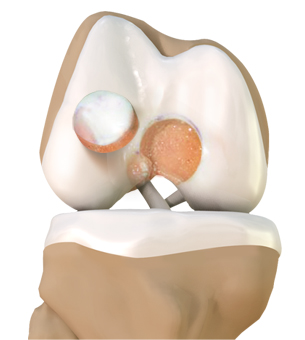
Cartilage restoration is a surgical procedure where orthopedic surgeons stimulate the growth of new cartilage that restores the normal function.
- Orthobiologics
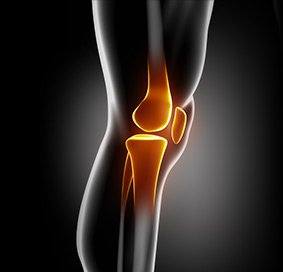
Use of orthobiologics to treat knee injuries or conditions is known as orthobiologics for the knee.
- ACL Reconstruction with Patellar Tendon
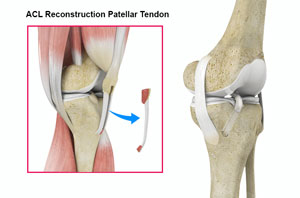
Anterior cruciate ligament reconstruction patellar tendon is a surgical procedure to replace the torn ACL with part of the patellar tendon taken from your leg.
- ACL Reconstruction Procedure with Hamstring Tendon
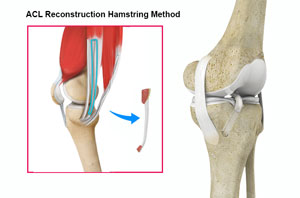
The goal of ACL reconstruction surgery is to tighten your knee and restore its stability.
- Physeal Sparing Surgery (Anderson's Technique)

Surgery may be necessary to reconstruct an irreparable anterior cruciate ligament (torn ACL). In adults, reconstruction of the ACL involves passing a soft tissue graft through tunnels drilled into the shinbone (tibia) and thighbone (femur).
- Physeal Sparing Surgery (Micheli-KocherTechnique)
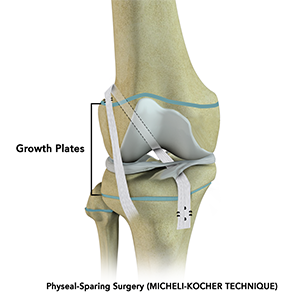
The technique described by Micheli-Kocher is a type of physeal sparing approach that harvests and uses a part of the iliotibial band (band of tissue that runs along the outside of your thigh) to reconstruct the ACL.
- Partial Arthroscopic Meniscectomy
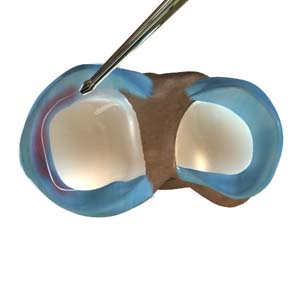
Partial arthroscopic meniscectomy is a procedure to remove the damaged part of a meniscus in the knee joint with the help an arthroscope.
- Saucerization

Saucerization is a surgical procedure performed to treat a discoid (disc-shaped) meniscus in the knee joint which is more prone to injury. The normal meniscus is crescent-shaped cartilage cushioning the ends of the femur (thighbone) and tibia (shinbone) in the knee.
- Intraarticluar Knee Injection

Knee pain and stiffness can be disabling and difficult to treat. It can limit an individual’s lifestyle and negatively impact body image and emotional well-being.
- Combined Hyaluronic Therapy for the Knee
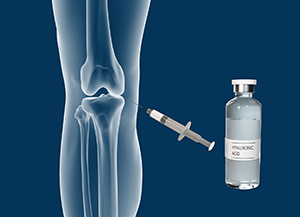
Combined hyaluronic therapy is the process of injecting hyaluronic acid (HA) along with platelet-rich plasma (PRP) into your knee to treat osteoarthritis.
- Knee Fracture Surgery
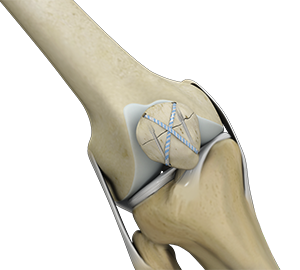
Knee fracture surgery is a surgical procedure performed to correct the cracked or broken bones in or around the knee to restore normal anatomical function, stability, and motion.
- Matrix Induced Autologous Chondrocyte Implantation (MACI)
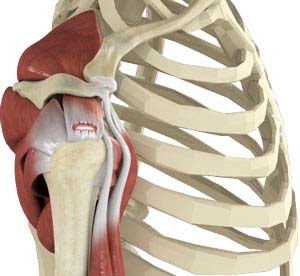
Matrix-Induced autologous chondrocyte implantation is an innovative, FDA-approved cartilage restoration procedure that uses your own cells to repair cartilage defects in your knee.
- Arthroscopic Debridement

Arthroscopic debridement or a clean-up is a surgical procedure performed using an arthroscope. In this procedure, the cartilage or the bone that is damaged is removed using surgical instruments and the edges of the articular cartilage that are rough will be smoothened.
- LPFL Reconstruction
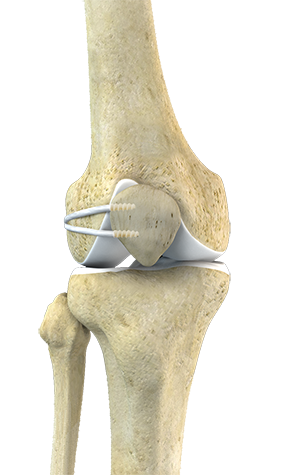
LPFL reconstruction or lateral patellofemoral ligament reconstruction is a surgical procedure employed to treat patients with severe patellofemoral instability.
- Tibial Derotational Osteotomy
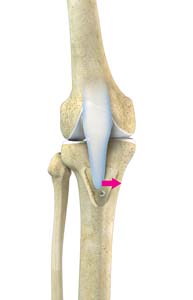
Tibial derotational osteotomy is a surgical procedure employed to treat rotational deformities of the tibia, such as tibial torsion.
- Failed Anterior Cruciate Ligament (ACL) Reconstruction

A revision ACL reconstruction is considered after determining the exact cause for the initial failure. Repeat surgery is performed to improve graft stability and address other comorbidities such as infection and arthrofibrosis.
- Failed Meniscus Repair
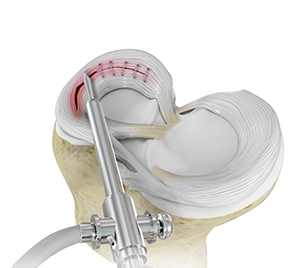
Meniscal repair may be performed either by open surgery under direct vision or minimally invasively using an arthroscope, which is a thin tube fitted with a camera that can be inserted into the knee through a very small incision to locate and repair the damaged meniscus.
- Meniscal Transplantation

Meniscal transplantation is a surgical procedure to replace the damaged meniscus of the knee with healthy cartilage.
- Meniscectomy
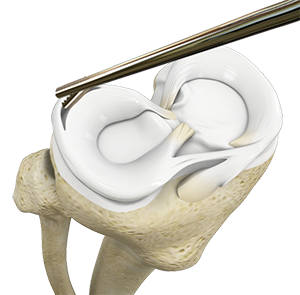
Meniscectomy is a surgical procedure indicated in individuals with torn meniscus where the conservative treatments are a failure to relieve the pain and other symptoms. Meniscectomy is recommended based on the ability of meniscus to heal, patient’s age, health status, and activity level.
- Mosaicplasty
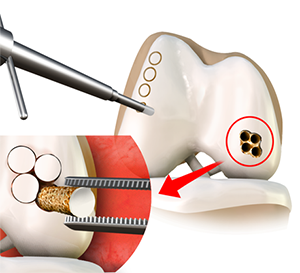
Weight-bearing joints, such as the knee, may develop defects in the articular cartilage (spongy tissue that lines and cushions joints during movement) due to stress, trauma or degenerative disease.
- Posterolateral Corner Reconstruction
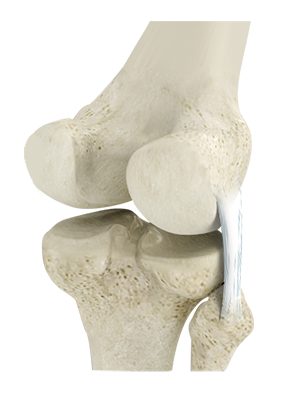
Posterolateral corner injury is damage or injury to the structures of the posterolateral corner. The structures of the posterolateral corner include the lateral collateral ligament, the popliteus tendon, and the popliteo-fibular ligament.
- Prior Meniscectomy

Meniscectomy involves the total or partial removal of the damaged or torn meniscus. It is indicated for horizontal and flap tears, and moderate to large tears at the outer edge of the meniscus.
- Quadriceps Tendon Repair
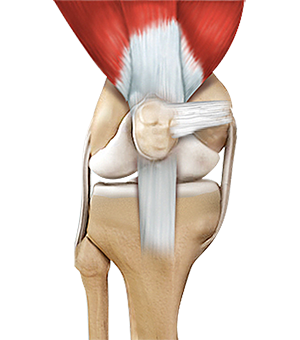
Quadriceps tendon is a thick tissue located at the top of the kneecap. The quadriceps tendon works together with the quadriceps muscles to allow us to straighten our leg. The quadriceps muscles are the muscles located in front of the thigh.
- Tibial Eminence Fracture
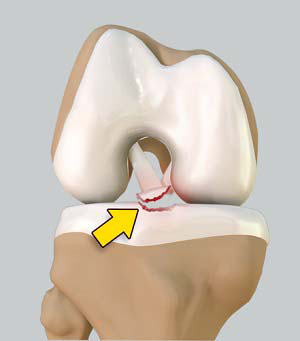
The tibia or shin bone is a major bone of the leg which connects the knee to the ankle. A fracture or break in the upper part of the tibia is known as a proximal tibial fracture and commonly occurs just below the knee joint.
- Trochleoplasty
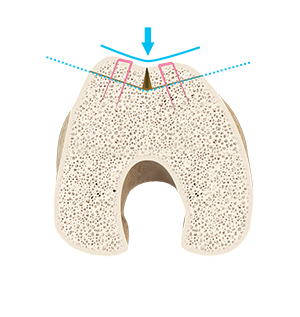
Before performing trochleoplasty, your doctor will ensure that the articular cartilage (spongy tissue that lines and cushions joints during movement) at the trochlea is normal and healthy.
- ORIF of the Knee Fracture
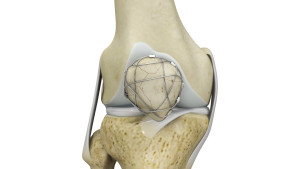
ORIF refers to open reduction and internal fixation. It is a surgical procedure employed for the treatment of a fracture not amenable to non-surgical conservative treatment.
- Chondroplasty
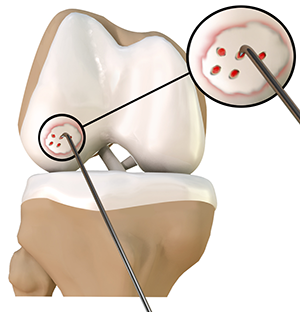
Chondroplasty is a surgical procedure to repair and reshape damaged cartilage in a joint. The procedure involves smoothing degenerative cartilage and trimming any unstable flaps of cartilage.
- Distal Femoral Osteotomy

An osteotomy is a surgical procedure that involves cutting of bone. The distal femur is part of the femur (thighbone) just above the knee joint. Distal femoral osteotomy is performed to correct knee alignment which can lead to excessive loading and degeneration of one side of the knee joint.
- Physeal Sparing Reconstruction of the Anterior Cruciate Ligament

Physeal sparing reconstruction of the anterior cruciate ligament is a surgery to replace a torn anterior cruciate ligament or ACL, a major ligament of the knee, while minimizing damage to the growth plate (physis) present near the end of the bone.
- Bone-Patellar Tendon-Bone (BPTB) Autograft

An autograft refers to using organ or tissue (bone, cartilage, tendon or skin) from the same person to transplant elsewhere on their body.
- Bone-Patellar Tendon-Bone (BPTB) Allograft

An allograft is an organ or tissue such as bone, cartilage, tendon or skin, taken from one person (donor) and surgically placed in another person to repair damaged tissue.
- Hamstring Autograft

An autograft refers to using organ or tissue (bone, cartilage, tendon or skin) from the same person to transplant elsewhere on their body.
- Pharmacological Interventions for Knee Injuries

Pharmacological interventions include medicinal preparations such as pain-relieving capsules or injections.
- Hamstring Allograft

An allograft is an organ or tissue such as bone, cartilage, tendon or skin, taken from one person (donor) and surgically placed in another person to repair damaged tissue.
- Viscosupplementation
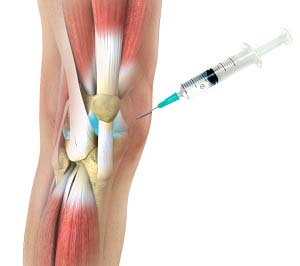
Viscosupplementation refers to the injection of a hyaluronan preparation into the joint. Hyaluronan is a natural substance present in the joint fluid that assists in lubrication.
- Physical Therapy for Knee
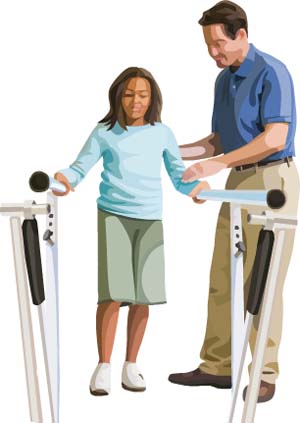
Physical therapy is an exercise program that helps you to improve movement, relieve pain, encourage blood flow for faster healing, and restore your physical function and fitness level.
- Knee Osteotomy
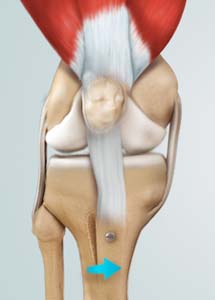
Knee osteotomy is a surgical procedure in which the upper shinbone (tibia) or lower thighbone (femur) is cut and realigned. It is usually performed in arthritic conditions affecting only one side of your knee.
- High Tibial Osteotomy
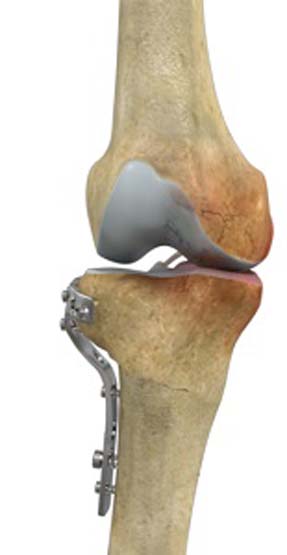
High tibial osteotomy is a surgical procedure performed to relieve pressure on the damaged site of an arthritic knee joint.
- Tibial Tubercle Osteotomy

Tibial tubercle osteotomy is a surgical procedure that is performed along with other procedures to treat patellar instability, patellofemoral pain, and osteoarthritis.
- Patellar Tendon Repair
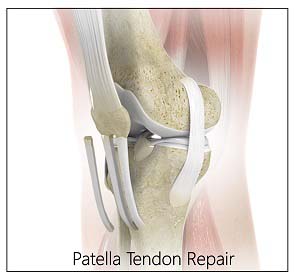
The goal of the surgery is to reattach the torn tendon to the kneecap and to restore normal function in the affected leg. The procedure is performed under regional or general anesthesia and an incision is made on the front of the knee to expose the tendon rupture.
- Robotic Assisted Partial Knee Surgery
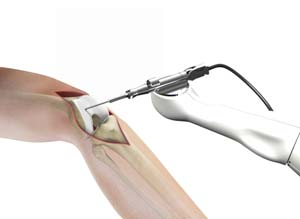
Robotic-assisted partial knee surgery is an innovative alternative to the conventional surgical procedure to treat degenerative knee diseases such as osteoarthritis.
- Distal Realignment Procedures
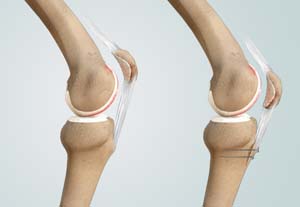
Distal realignment procedures, also known as tibial tubercle transfer (TTT) procedures, are performed to reposition the kneecap after subluxation or dislocation by realigning the tendon under the kneecap to the underlying tibial tubercle.
- Arthroscopic Reconstruction of the Knee for Ligament Injuries
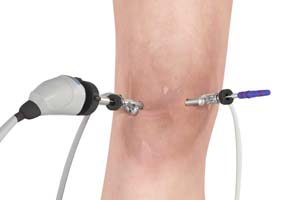
The surgical repair of the completely torn ligament involves reconstruction of the torn ligament using a tissue graft taken from another part of the body or from a donor.
- PCL Reconstruction
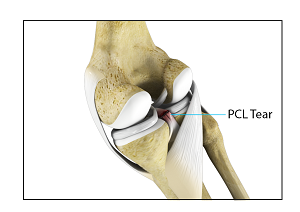
PCL injuries are very rare and are more difficult to detect than other knee ligament injuries. Cartilage injuries, bone bruises, and ligament injuries often occur in combination with PCL injuries. Injuries to the PCL can be graded as I, II or III depending on the severity of injury.
- LCL Reconstruction
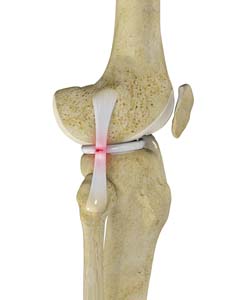
The knee is the largest joint of the body and is stabilized by a set of ligaments. In the knee, there are four primary ligaments viz. anterior cruciate ligament (ACL), posterior cruciate ligament (PCL), medial collateral ligament (MCL) and lateral collateral ligament.
- MCL Reconstruction
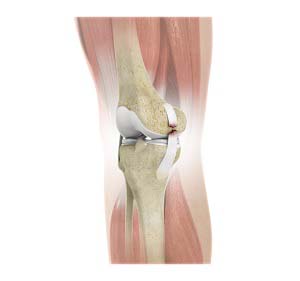
Medial collateral ligament reconstruction is indicated for chronic MCL instability despite appropriate non-surgical treatment.
- Cartilage Replacement
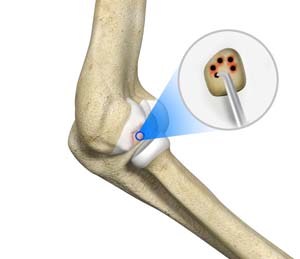
Cartilage replacement is a surgical procedure performed to replace the worn-out cartilage with new cartilage.
- Bicompartmental Knee Resurfacing
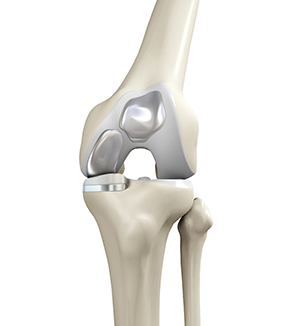
Bicompartmental knee resurfacing is a less invasive surgical alternative to total knee replacement surgery, where instead of all the compartments being replaced only 2 of the 3 compartments of the knee damaged by arthritis are replaced with a prosthesis.
- Autologous Chondrocyte Implantation

Autologous chondrocyte implantation (ACI) is a procedure to treat the articular cartilage defects of the knee. This procedure is effective for treating small areas of cartilage damage that causes pain and swelling and restricts range of motion.
- Subchondroplasty
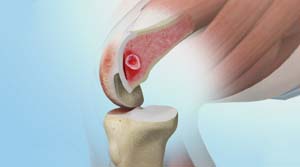
Subchondroplasty is a minimally invasive procedure that is performed to specifically repair chronic BMLs by filling them with a bone substitute material. The bone substitute is then slowly resorbed and replaced with healthy bone, repairing the bone defect.
- Partial Meniscectomy

Partial meniscectomy is a surgical procedure to remove the torn portion of the meniscus from the knee joint.
- Transphyseal Surgery

Surgery may be necessary to reconstruct an irreparable anterior cruciate ligament (torn ACL). It usually involves the use of a soft tissue graft which is passed through tunnels drilled into the shin and thigh bones and secured to these bones.
- Partial Transphyseal Surgery

Partial transphyseal surgery is an arthroscopically assisted operative procedure to reconstruct the anterior cruciate ligament (ACL) in the knee of a child or adolescent with growth plates or physis (areas near the ends of long bones where growth is still occurring).

